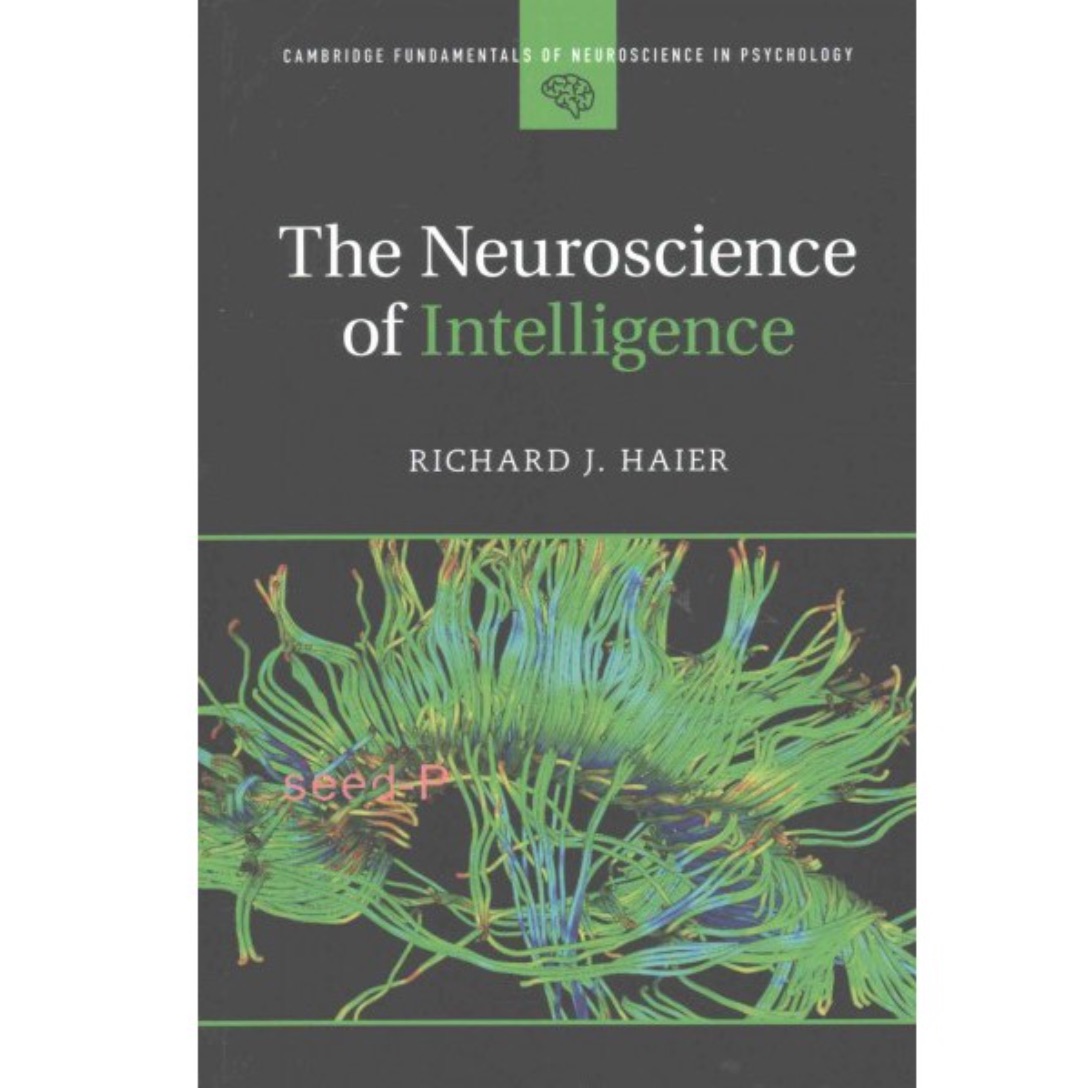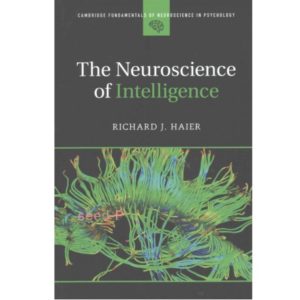
The Neuroscience of Intelligence explores intriguing ideas about the neuroscientific and genetic bases of intelligence such as that genes play a more critical role than does environment in determining intelligence, that there are neurological markers of intelligence, and that we may be able to apply neuroscience to increase individuals’ intelligence. Author Richard J. Haier is professor emeritus at the University of California, Irvine, a former president of the International Society for Intelligence Research, and a pioneer in the use of neuroscientific methods to study intelligence. He writes in both a scientifically accurate and detailed way and in a manner that comprehensibly situates scientific findings in a broader perspective. Thus, the book will appeal both to neuropsychologists interested in a survey of the last several decades of intelligence research as well as to a general audience interested in understanding the implications of intelligence research as we build a better society. Haier addresses misconceptions about intelligence, explains how it is measured, and discusses the genetic-, epigenetic-, and brain-bases of intelligence. He concludes by discussing ways we can increase intelligence (and why we should be leery of many claims about increasing intelligence) and the policy implications of doing so.
Haier explains that intelligence is a general mental ability. Individuals vary in their ability to learn, remember, and deduce. This variability is measureable to assess intelligence. The common factor governing performance on all tests of mental ability is called “g,” the general factor of intelligence. IQ, measured with tests like the Raven’s Advanced Progressive Matrix, is different from g, but often used as a reliable proxy for it. Haier emphasizes that one of the shortcomings with IQ scores is that they are intelligible only relative to other people. They are not scored on a ratio scale with a true zero value. Nonetheless, IQ scores, Haier claims, are unbiased and do predict academic and life success. He reviews several studies suggesting that IQ measured early in life can predict success, longevity, happiness, and health much later in life. As such, in considering changes to the educational system, he argues that we need to consider the real limits IQ exerts on the ability of some individuals to achieve.
Drawing from a body of research, Haier argues that the vast majority of variability in intelligence is due to genes, rather than environmental factors. It is likely the case that many genes influence intelligence. He says that finding the genes involved in determining intelligence has been and will continue to be difficult, and that an even greater challenge is understanding how, why, and when certain genes influence intelligence.
Early research into the brain-basis of intelligence provided evidence for the idea that brain efficiency, rather than overall brain activity, is related to intelligence. It also provided evidence for the idea that not all brains perform the same functions in the same way. While anatomically it is difficult to distinguish between brains from high and low IQ people, there are observable differences in brain functioning and connectivity related to IQ. For example, the thickness of the corpus callosum (which connects the two brain hemispheres) is related to IQ, and the density and organization of white matter tracts in the frontal and parietal lobes of the brain differ as a function of IQ. Haier and his colleague developed the parieto-frontal integration theory of intelligence, which suggests that the integration of and communication between certain frontal and parietal areas is especially important for intelligence. Recent brain imaging studies have added evidence that supports this theory. Haier reports that scientists are working towards identifying neuromarkers of intelligence as unique as our fingerprints that may lead to more personalized educational programs.
Haier is optimistic about the potential for neuroscience and especially genetic research to boost intelligence. Although confident that we will be able to boost intelligence, Haier discusses several high profile studies—about listening to Mozart, training working memory, and playing computer games—that inappropriately claimed to increase intelligence. One of the largest roadblocks to advancing the study of intelligence enhancement is that psychometric testing of intelligence lacks a ratio score. Chronometric testing, which assesses the speed with which people reason, may be a way to measure intelligence using ratio scores.
Wading into some of the most controversial and important work related to intelligence, Haier argues that “poverty and near-poverty for [low IQ people] is a condition that may have some roots in the neurobiology of intelligence beyond anyone’s control.” That is, genetic determinants of intelligence may partially explain why some people live in poverty. Although this seems concerning, Haier argues that there is reason for optimism because we may be able to treat “neuro-poverty.” He argues that because intelligence is rooted in genetics, and thus subject to limited control, it is wrong for society to avoid protecting individuals from the consequences of their cognitive weaknesses.
As a careful scientist, Haier reminds his readers repeatedly that the brain is complex, no one study of the brain is definitive, and it takes time for truth to emerge from a body of literature about the brain. He has carefully synthesized and analyzed what he sees as the truth in that body of literature. With enthusiasm he urges young scientists to continue to pursue vigorously the study of intelligence, as we may be on the precipitous of great advances in the field.
Haier, R. J. (2016). The Neuroscience of Intelligence. New York, NY: Cambridge University Press.





